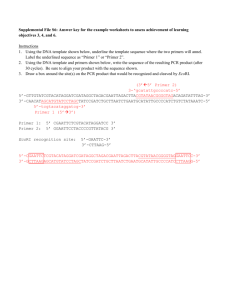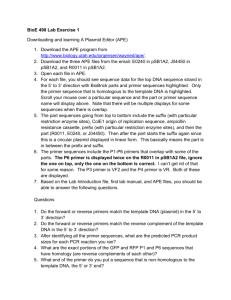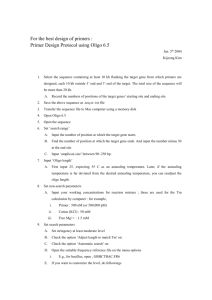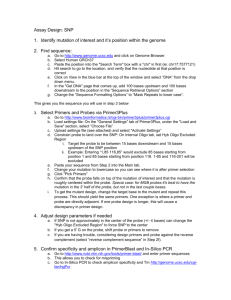Basic principle for primer design
advertisement
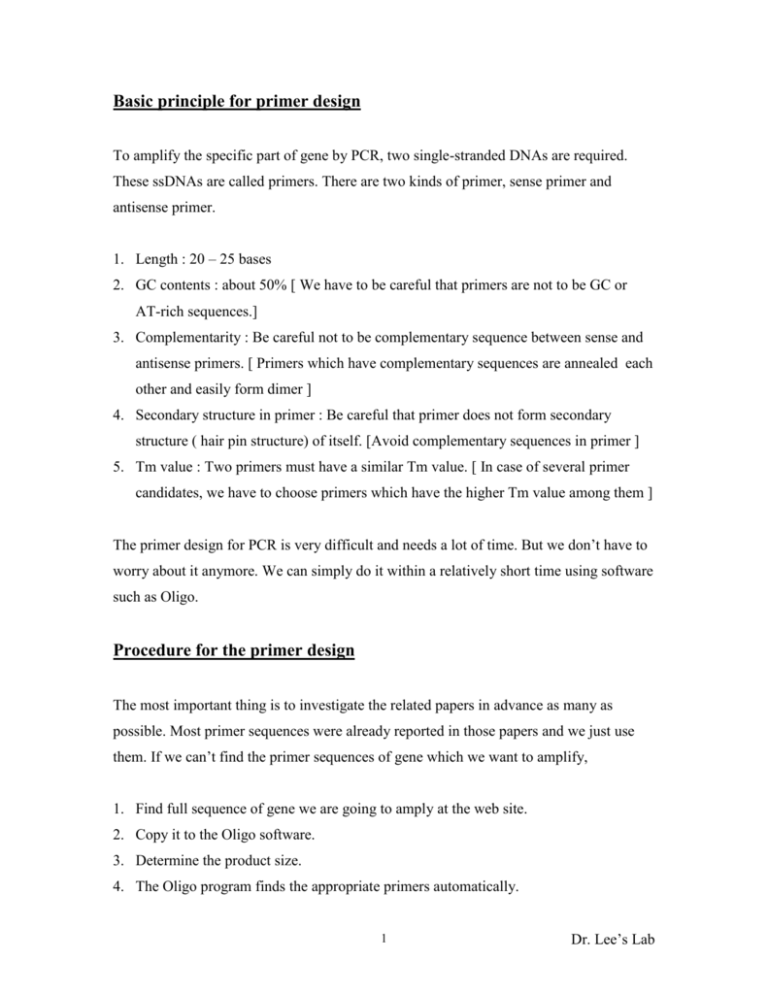
Basic principle for primer design To amplify the specific part of gene by PCR, two single-stranded DNAs are required. These ssDNAs are called primers. There are two kinds of primer, sense primer and antisense primer. 1. Length : 20 – 25 bases 2. GC contents : about 50% [ We have to be careful that primers are not to be GC or AT-rich sequences.] 3. Complementarity : Be careful not to be complementary sequence between sense and antisense primers. [ Primers which have complementary sequences are annealed each other and easily form dimer ] 4. Secondary structure in primer : Be careful that primer does not form secondary structure ( hair pin structure) of itself. [Avoid complementary sequences in primer ] 5. Tm value : Two primers must have a similar Tm value. [ In case of several primer candidates, we have to choose primers which have the higher Tm value among them ] The primer design for PCR is very difficult and needs a lot of time. But we don’t have to worry about it anymore. We can simply do it within a relatively short time using software such as Oligo. Procedure for the primer design The most important thing is to investigate the related papers in advance as many as possible. Most primer sequences were already reported in those papers and we just use them. If we can’t find the primer sequences of gene which we want to amplify, 1. Find full sequence of gene we are going to amply at the web site. 2. Copy it to the Oligo software. 3. Determine the product size. 4. The Oligo program finds the appropriate primers automatically. 1 Dr. Lee’s Lab



